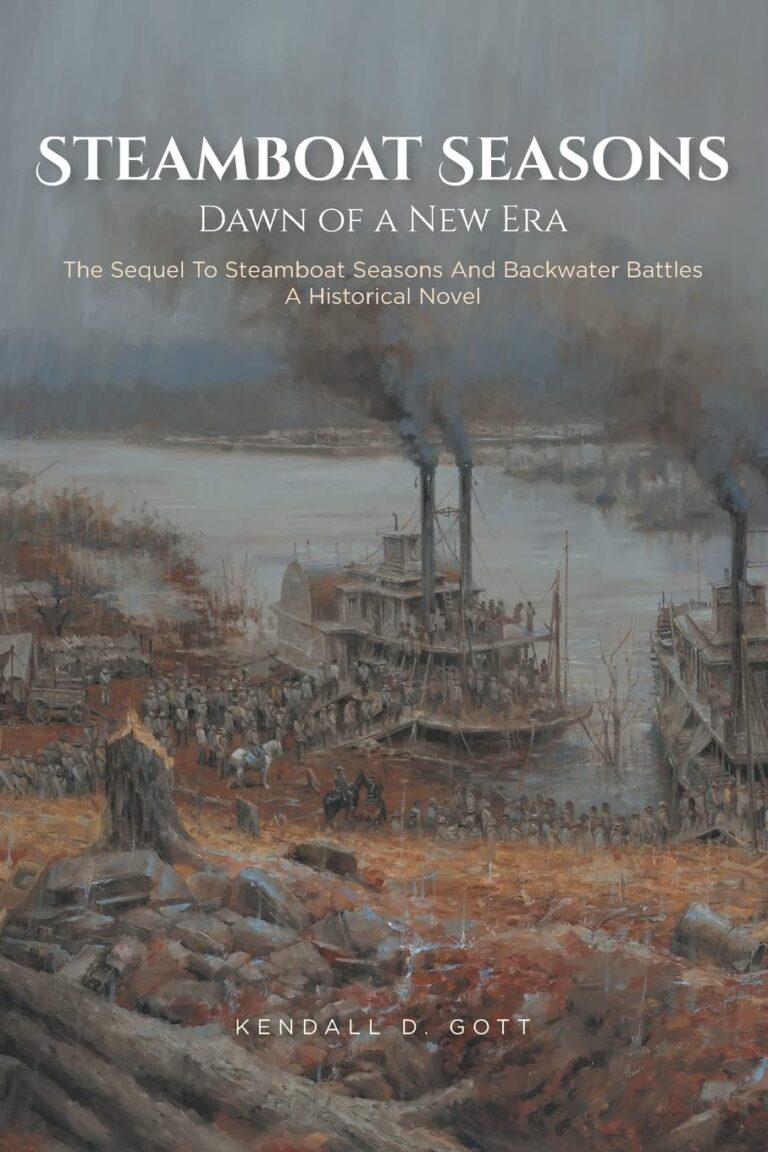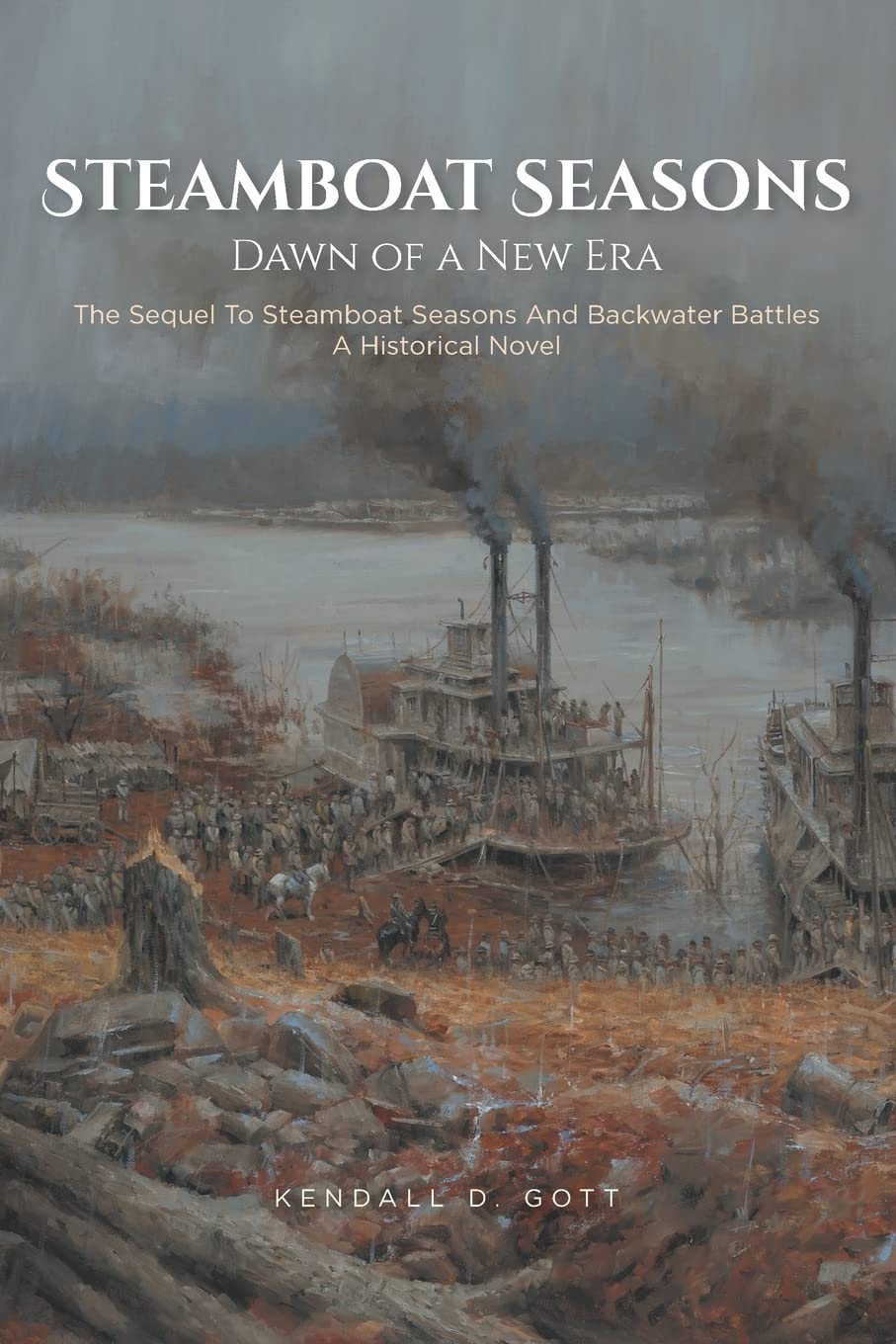“It is still a good time to be a steamboatman in the summer of 1865.” The war has ended, soldiers are being discharged, and the country is transitioning onto a peacetime footing with a new population of free African-Americans. But peace is still fragile, and steaming south to New Orleans or west to Montana still shows the challenges facing a melting-pot of United States struggling to forge a common identity.
DAWN OF AN ERA is exactly what it says on the tin: a picture of a particular moment in American history. In that sense the text is successful, suffused with tangible detail about the world. Sometimes this is found in the particulars of the steamboat trade – how the steam-engine machinery works, the personalities and dangers of the different rivers – but at others, it’s in small, homely details of everyday life – the proper way to make a good pot of coffee, out-of-date copies of Jane Eyre in some backwater grocer’s shop. The intense attention to layouts of towns and tricky bends in waterways evinces the care with which the world is researched and imagined. Most importantly, however, DAWN OF AN ERA portrays some of the tensions still roiling society in the Reconstruction era despite the military defeat of the Confederacy. The work pointedly does not truck in any Lost Cause myth (a frequent pitfall for fiction and non-fiction about the period): the rebellion was about protecting the vile institution of slavery, and the society that supported that rebellion was rightfully destroyed. Aside from some occasional issues with tense and small typos, all of this is relayed in clear, business-like language – appropriate to its narrator, the veteran steamboatman.
The novel’s difficulties are formal. This is described as “a historical novel” in the front matter, but it suffers most if judged as one. The plot is unevenly-paced. Falling into three general sections, the middle is given over to gunfights, a manhunt, some explosions – only for the final section to slow to a glacial crawl, a tense but mostly quiet journey through sparsely-settled Montana. Especially since several of these sections are bracketed by returns to the steamboat company offices, these narrative units are a missed opportunity to shuffle events around and pace the action more evenly. The novel is also quite thin on character – another missed opportunity, considering how interesting some of the characters should be. The protagonist spends a night with his aging parents (German immigrant farmers) in what could be a fascinating episode, rich in both detail of their domestic life and in emotional affect; yet the whole affair is wrapped up briskly and given substantially less time than rote descriptions of steamboats and their routes. Ultimately, one wonders whether this material would have been better-handled as creative nonfiction, focusing on its strengths (strong research, clear descriptive writing) and eliding its weaknesses (pacing, character): DAWN OF AN ERA could just as easily be a sort of historical guidebook to steamboat river trade, and feel much stronger for it. Nonetheless, for those interested in the Civil War and Reconstruction, the age of steam and rail, or industry and capital in the mid-19th century, DAWN OF AN ERA still packs enough historical detail to keep the pages turning.
Kendall D. Gott’s STEAMBOAT SEASONS: Dawn of a New Era presents a compelling and detailed portrait of an under-appreciated juncture in American history.
~Dan Accardi for IndieReader


